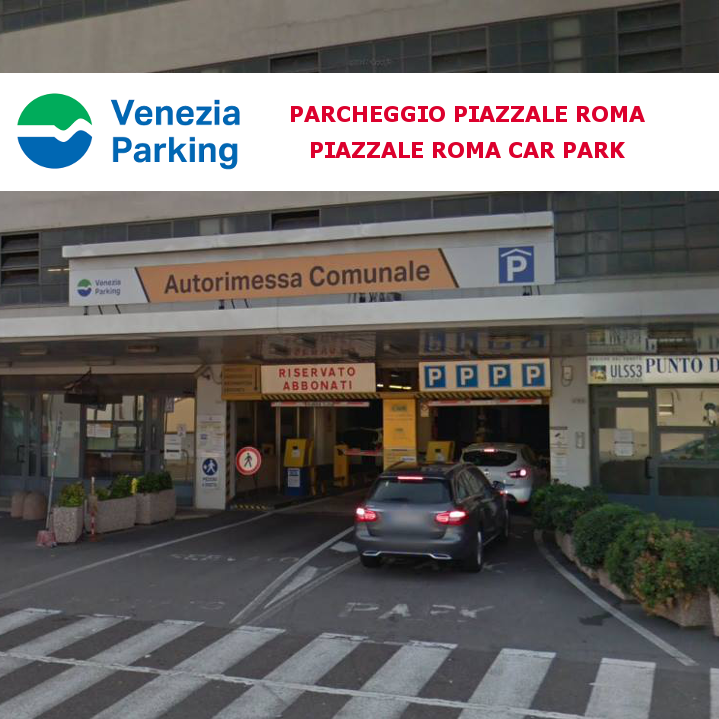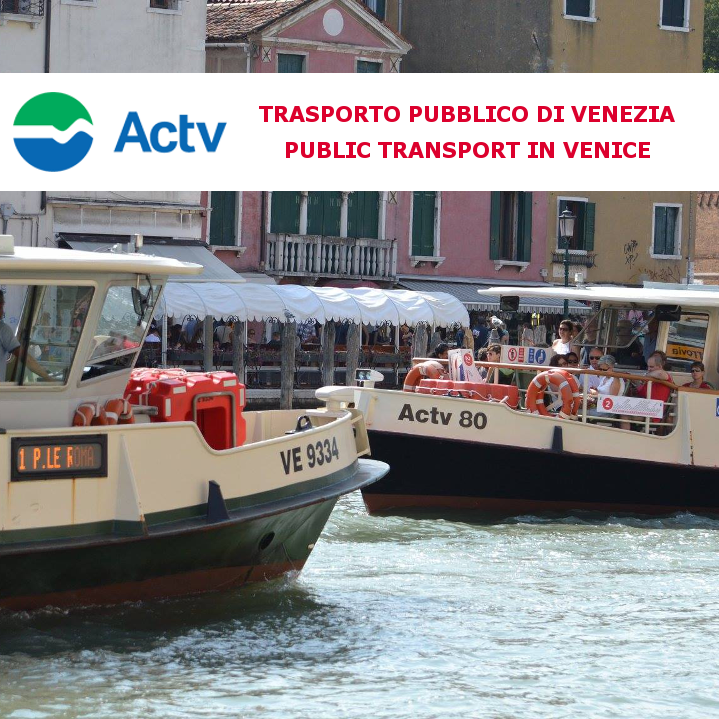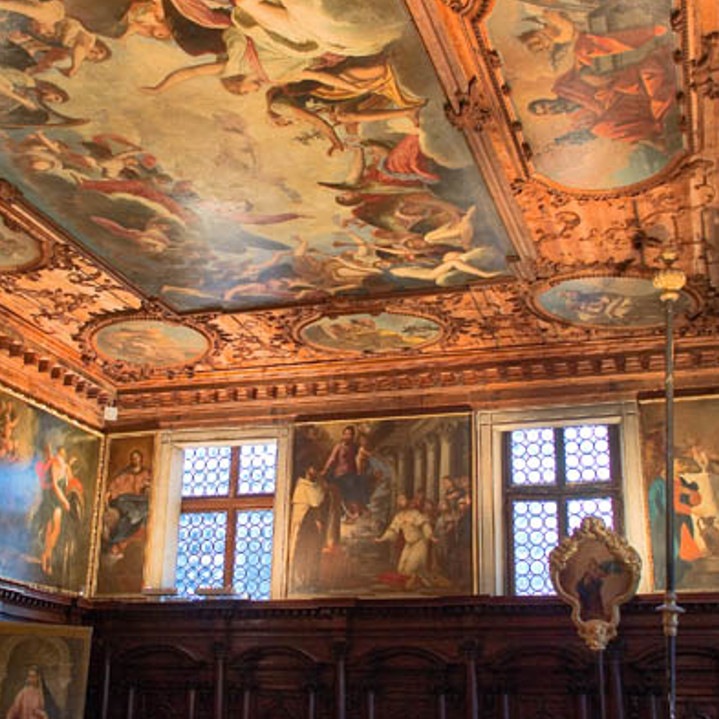You are here
In Castello, remembering ancient churches, convents and brotherhoods
In Castello, remembering ancient churches, convents and brotherhoods
This itinerary is dedicated to the discovery of the less well-known parts of the Castello district, starting from the easternmost part of the city, the island of Olivolo, where the ancient Cathedral of San Pietro di Castello still sits.
In the course of this walk, visitors will discover the area of the historical shipyard of the Serenissima Republic, where the maritime and commercial power of the city-state had its origins, basing its strength on the commercial traffic between the Far East, the Middle East and Europe and on the control of the maritime routes of the Mediterranean, the Black Sea and the North Sea.
Visitors will also be able to see the Scuole of some of the oldest confraternities such as that of San Giorgio dei Dalmati; hospitals such as the former Hospital of Saints Peter and Paul; monasteries such as the complex of San Francesco della Vigna, the church of the suppressed Benedictine convent of San Lorenzo, that of Santa Giustina and San Zaccaria which, in addition to being a convent, had historically close connections with the State.
On this itinerary you will have the chance to discover three handicraft workshops: Kirumakata, which creates jewels using the very old technique called lampworking; Schola San Zaccaria, which makes frames and paintings, and finally Alice in Wonderland Fine Arts, an unusual workshop where you can admire Murano glass art pieces such as mosaics, icons painting an mirrors.
The Site “Venice and its Lagoon” has been inscribed on the World Heritage List since 1987 due to its Outstanding Universal Value, therefore it belongs to all of us: it is our common duty to respect it and preserve it so that it may be passed on to future generations.
The cultural heritage of the Site goes beyond the walls of palaces, churches, beyond islands and the lagoon, but is also memory, identity, community, all fundamental elements for the its vitality.
In 2017, the City of Venice launched the #EnjoyRespectVenezia campaign to raise awareness of tourists impact among visitors inviting them to maintain a respectful and polite behaviour during their staying, respecting the city and its inhabitants: it is important for example to walk keeping on the right, not to stop and sit on the bridges, not to feed the birds, to always observe a decent attitude in keeping with the place you are visiting.
- Duration: approx. 5 hours including the visits to the churches and Museum of Greek icons
- Lenght: 4,5 km
- Mode of travel: the itinerary takes place entirely on foot
- Recommended period: all year round. During the autumn months when high tides are more likely to occur, there are gangways to make the sights accessible
- Accessibility: not accessible to people with reduced mobility
- Departure: San Pietro di Castello stop of public boat lines 5.1 and 5.2.
- Arrival: Campo San Zaccaria
- District: Castello
-
Major attractions and highlights:
1. Chiesa di San Pietro di Castello (former cathedral)
2. Campo de l’Arsenal
3. Chiesa di San Francesco della Vigna
4. Scuola Dalmata di San Giorgio degli Schiavoni
5. Museum of Byzantine Icons abd Chiesa di San Giorgio dei Greci
6. Chiesa di San Zaccaria - Squares and rest areas: there are no rest areas or facilities along this itinerary. Campo de l'Arsenal and Campo di San Francesco della Vigna have benches where you can rest, always remembering that it is not possible to have a picnic, feed the pigeons and your behaviour must be appropriate to the places you are visiting, also in compliance with the rules of the #EnjoyRespectVenezia campaign.
- Public drinking fountains: Campo della Tana, Campo San Zaccaria
- Venetian cuisine: on our stroll along Calli and Campielli within the sestiere you can find some typical traditional restaurants such as "osterie" and "trattorie" serving genuine Venetian cuisine, such as appetizers made of various "cicchetti", pasta, "risi e bisi" (that is risotto with peas), or even a fish risotto, as well as delicious spaghetti with clams. You can taste the "sarde in saor”, "baccala mantecato” or polenta served with the "schie", grey shrimps caught in the Venetian lagoon.
Listen to the audio tour
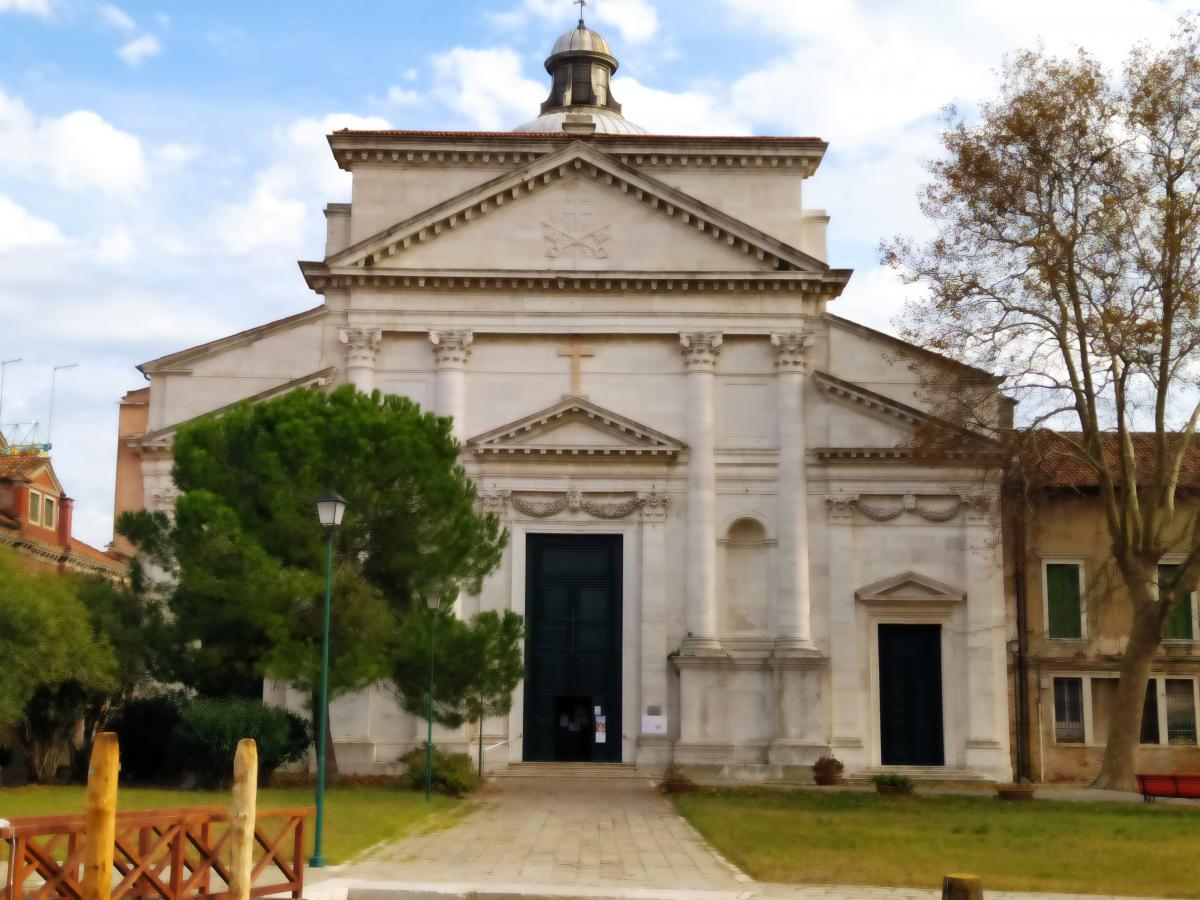
San Pietro di Castello
ph. Comune di Venezia
Stage 1: From San Pietro di Castello to the workshop Kirumakata
The visit starts from the island of Olivolo, the location of the former Cathedral of Venice, initially the see of the Bishop of Castello and later of the Patriarch of Venice. The next stop will be the North Arsenal; this section of the itinerary ends at Kirumakata, the contemporary jewelry studio on Fondamenta Sant Anna.
The visit begins at the San Pietro di Castello stop of public boat lines 5.1 and 5.2, from where you can already see the walls of the Arsenale Nord and the Gate called Porta Nuova, built in the 19th century. At the time of the Republic of Venice there was only one way in and out of the State shipyard, the gateway known as Porta dei Leoni (Lion's Gate) because of the majestic lion statues that adorn it.
The San Pietro di Castello stop enjoys a beautiful view over the lead-clad apses and dome of the former cathedral, topped by the tall lantern.
We walk along the short Fondamenta Olivolo, which takes its name from the island, which, in turn, derived this name from its peculiar shape, reminiscent of an olive. After passing the Campiello dei Pomeri, where in ancient times apple trees grew, and noting some plaques with ancient inscriptions of the Scuola Grande della Misericordia on dwellings built for the members of the Confraternity who had no financial means, on the left we notice the long Quintavalle bridge spanning the wide San Pietro canal, and from which we can enjoy a very interesting view that hints at the suggestive atmosphere of Olivolo. On the opposite bank we notice a complex of typical Venetian social housing, today beautifully restored and now a residential development. Before entering the Calle drio (in Venetian language it means behind) el Campaniel it is possible to stop for a few moments on the wooden pier on your left to admire the Arsenale walls, the Torre di Porta Nuova and the long iron bridge that connects Olivolo to the city.
Before entering the Calle drio el Campaniel, our eyes are drawn to the exquisite relief in Istrian stone depicting St. Peter kneeling in front of the Virgin Mary on the throne with the Child Jesus: the scene is dominated by the Dove, the symbol of the Holy Ghost. It is also possible to make a short stop at the drinking water fountain.
Leaving the street, we are exactly in front of the partially sunk base of the campanile, which gives it its characteristic eastward-leaning shape. Built in the 1480s, the campanile of San Pietro is the only one in the whole city entirely faced with Istrian stone and it is considered one of Mauro Coducci's masterpieces. If we turn around,we will notice a beautiful keystone on the door of the building next to the patriarchal palace depicting a Eucharistic chalice surrounded by clouds.
We will then walk along the walls of the ancient Palazzo Patriarcale to enter the cloister, now state property, and today converted into public housing, after being transformed into a military hospital by Napoleon.
During a sunny summer day Campo San Pietro is the perfect spot where to sit on a bench and enjoy the special atmosphere of a time gone by in a rarefied and almost mystical silence that can be perceived in this place full of charm and mystery. The Campo is dominated by the Palladian façade of the church built between the end of the 16th and the beginning of the 17th century. The interior boasts an imposing Baroque altar designed by Baldassarre Longhena to contain the body of the first Patriarch of Venice, Lorenzo Giustiniani, appointed in 1451.
The Campo overall palette is dictated by the white of the Istria stone covering the façade of the ancient Cathedral and campanile, the green of the lawn, the church doors, the trees and oleanders, lovingly tended by the local residents, which is in sharp contrast to the Venetian red of the plaster of the houses and benches. Note that this square still retains its grass cover, the only one in the city along with Santa Maria Maggiore in Dorsoduro, so that can rightfully be called campo as it is indeed a field. The name campo derives from the fact that in ancient times vegetables were grown on these grassy expanses.
Leaving the island of Olivolo and crossing the bridge of San Pietro, we reach the modern Ponte dei Pensieri giving access to the Giardini delle Vergini, from the name of the ancient female convent that stood on this site. The bridge provides access to the Arsenale during the period of the Biennale and offers a spectacular view of the area of the Arsenale Nord where the eye-catching installation by artist Lorenzo Quinn, son of the famous American actor Antony Quinn, is located. From the Salizada Stretta we proceed towards Campo Ruga where two baroque palaces with a strong provincial accent should be noted.
Walking down calle Riello, we cross the characteristic arcade, and take calle San Gioacchino to reach the former hospital of Saints Peter and Paul of very ancient foundation and the first established in the city, today converted into an elementary school. Step inside to see the ancient cloister and the beautiful relief above the entrance portal, and then head back down calle San Gioacchino. This section of itinerary ends with a visit to the Kirumakata artisan studio.
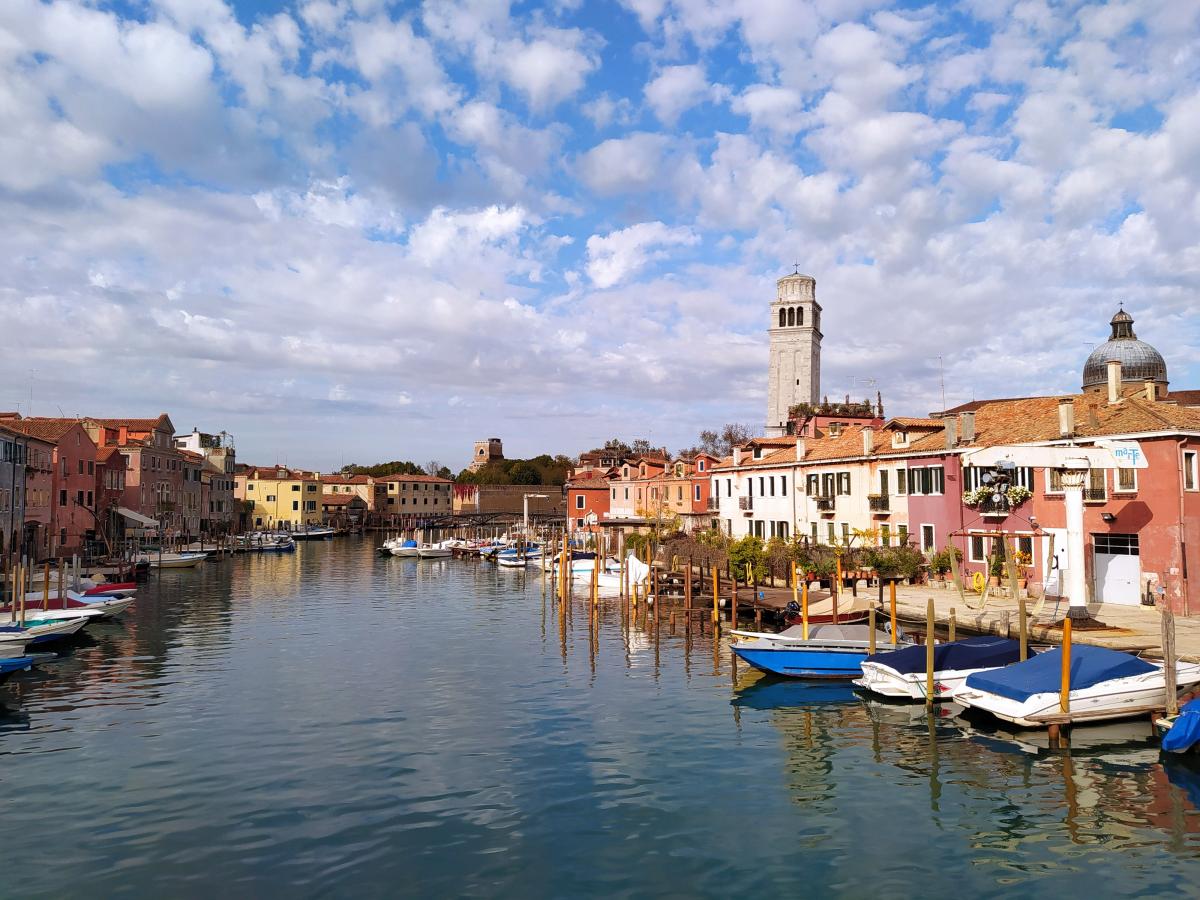
San Pietro di Castello island
ph. Comune di Venezia
Stage 2: From the workshop Alice in Wonderland Fine Arts to Campo Do Pozzi
This will be an opportunity for break in one of the characteristic bars or trattorias that animate the area between the end of the Sant'Anna canal and the beginning of Via Garibaldi, where the atmosphere is still that of a tight-knit community and where the locals love to get together to drink an ombra de vin, a glass of wine, and engage in animated conversations. Right in the middle of things is a bar that advertises the Aperol Spritz and the famous Venetian sandwiches. On via Garibaldi 1639 you find Alice in Wonderland fine art where you can enjoy the exquisite mosaics made according to the ancient tradition, the Byzantines icons on glass as well as the elegant mirror created in this unique workshop.
From the Colonnette bar we recommend a small detour to stop along the Fondamenta del rio de la Tana and observe the wall curtain and corner tower of the Arsenale at the intersection of Rio della Tana and Rio San Daniele. From this vantage point, time really seems to have stopped in the Middle Ages.
This is the starting point of the part of the itinerary that explores the Arsenale area, which covers more than one twentieth of the city and includes not only the shipyard but also a large number of buildings built expressly by the Republic to house sailors, specialized workers, hospitals and hospices for sailors and their widows, and many factories that at the time were located outside the city walls. From Via Garibaldi, leaving on the left the tree lined Viale Garibaldi with the monument to the General who championed the Unification of Italy, we enter Corte Nuova then proceed along the Fondamenta della Tana to Campo della Tana, which has a public drinking fountain.
Here you will see the outside of the famous Corderie built around 1590 for the manufacture of ropes used on ships all over Europe. The name comes from the city of Tana at the mouth of the river Don on the Black Sea, from where the Venetians imported the best quality hemp for the production of ropes that were in great demand throughout Europe. It is a 313m long single nave hall with a double row of columns running down its centre: considered the longest hall in Europe even in modern times, it is today one of the venues of the prestigious Biennale of Contemporary Art and Architecture.
Walking along Fondamenta della Madonna we come to the ancient Porta dei Leoni and Campo dell'Arsenale where you can stop on the benches in the shady area by the canal opposite Fondamenta della Madonna for a well-earned break.
Next to the water gate flanked by two magnificent towers, which were used to arm the galleys with masts and cannons, there is the land gate where highly specialized workers working on the construction, maintenance and repair of galleys and round cargo ships entered and exited the yard. In the fifteenth century the production system was already similar to the modern assembly line and it was therefore possible to build a warship in one day. In the sixteenth century the Arsenale was the largest industrial hub in Europe employing over 5000 workers.
We then take Calle Dell’Arsenale to the church of San Martino, built on a design by Jacopo Sansovino in mid-16th century, where on the facade next to the doorway we can see a large mask with its mouth open for the posting of the famous secret accusations where citizens had the duty, but also the right, to inform on those who committed a crime, by signing their own name and that of two witnesses...
Walking down Fondamenta Penini we reach Campo de le Gorne (in Venetian gorne means gutters) where we can see two large downspouts in Istrian stone jutting out of the walls of the State Shipyard and still perfectly preserved. Walking all the way down Rio de le Gorne we turn left into the arcades of sottoportico dell'Anzolo and arrive in Calle Magno, from the name of the Gothic palace (house number 2693) whose beautiful courtyard and original staircase can be visited asking permission.
Leaving Palazzo Magno we proceed to Campo do Pozzi, whose original name derives from the particular relief of two wells represented on the single wellhead standing in the Campo.
Arsenale
ph. Giorgio Bombieri - Comune di Venezia
Stage 3: From San Francesco della Vigna to the Scuola Dalmata
This section of the itinerary takes us from the complex of San Francesco della Vigna, to the Scuola of San Giorgio dei Dalmati, with a quick stop at the former Church of Santa Giustina. The victory at the battle of Lepanto is traditionally associated with this saint as it fell on her feast day, thus making her co-patron saint of Venice together with St. Mark and St. Theodore.
We cross Campo do Pozzi in the direction of Calle dei Scudi and Ponte dei Scudi where we will admire the water gate and the land gate of the beautiful Gothic palace originally owned by the Zeno family standing side by side across the bridge.
From here we continue along Salizada de le Gatte and Salizada San Francesco to get to the Campo della Confraternita next to the Church of San Francesco della Vigna, of the Franciscan Friars Minor, passing under the magnificent colonnade that supports the corridor connecting the ancient Palace of the Apostolic Nunciature, formerly the second residence of the Doge Andrea Gritti, to reach the friars' convent. The area exudes an atmosphere imbued with spirituality, as it seems that this was the place where St. Mark landed when he arrived in the lagoon from Aquileia. After having admired the harmonious Palladian proportions of the facade, it is possible to take a short break inside one of the two cloisters adjoining the church. The first cloister is interesting because it still retains the ancient cistern used to collect rainwater. The second cloister has a lawn and cypress trees and is lined with the tombstones of those who chose this cloister as their final resting place. The centre is dominated by the statue of Saint Francis of Assisi, the saint who founded a religious order that preaches poverty and simplicity in the religious relationship with Nature. The link with nature is further reinforced by the fact that this place was built on an ancient vineyard donated in 1200 by a member of the Ziani family to the Franciscans on which to build the monastery. The tall campanile offers a very particular perspective on the city as it is positioned North-East. From the top it is also possible to see the old vineyards still tended by the friars with the technical support of Cantine Santa Margherita since 2020. The wine produced in the ancient urban vineyard of San Francesco is called Harmonia Mundi in honour of the treatise on universal harmony published by Friar Sebastiano Zorzi and to whose rules the spatial proportions of the interior of the church, designed and built by Jacopo Sansovino, adhere. The proceeds from the sales of the Harmonia Mundi wine (one thousand bottles) are used to subsidize scholarships for the students of the Institute of Ecumenical Studies which has been located in the friary since 1989. The Institute also houses an impressive library of over 30,000 religious’ texts, including choral manuscripts, ancient texts and books dating from the 16th century through to contemporary publications.
The interior of the church is in the shape of a Latin cross with a single nave and deep side chapels: the chapel of the patriarch Giovanni Grimani, decorated by Federico Zuccato and Battista Franco; the chapel of the Giustinian family where we find the first work that Paolo Veronese painted in the city upon his arrival from Verona and, finally, the stunning monochrome Chapel of the Sagredo family, in which painting and sculpture merge into a harmonious whole, was built by architect Tommaso Temanza in the 18th century and adorned with illusionistic frescoes of great elegance and delicacy, painted in grisaille by Gian Battista Tiepolo.
Walking along Calle San Francesco we reach the suppressed convent of Santa Giustina, converted into a scientific high school in 1832, after having been a military school during the Napoleonic period. Designed by baroque architect Baldassarre Longhena, the facade has been partly damaged.
It is worth stopping on the Ponte di Santa Giustina to enjoy the view of the island of San Michele which, since 1832, has been the city cemetery but was once the site of a Camaldolese monastery. Also in the suppressed convent of San Michele in Isola vineyards have been cultivated within the garden walls since time immemorial. Since 2008 the vineyards of San Michele in Isola have been granted by the city council to the non-profit association "La laguna nel bicchiere. Le vigne ritrovate" which works to recover the ancient urban vineyards in order to bring them back to life and promote them also from a historical and cultural point of view. This project is gaining ground and is part of an international association, the Urban Vineyards Association, whose mission is to disseminate the culture of urban vineyards.
While still standing on the Santa Giustina bridge you can glimpse the back of the large baroque church of San Lorenzo, which was part of the city's largest Benedictine female monastery until the beginning of the 19th century. In the 1980s the church of San Lorenzo was chosen as the venue for Luigi Nono's concerts and for important theatrical performances as part of the Biennale Musica and the Biennale Teatro. For some years now its use has been granted to the Thyssen Bornemiza Foundation which, with Academy21 and Ocean Space, is a charity devoted to interdisciplinary projects involving art and ocean research.
Leaving campo Santa Giustina we enter Calle del Fondaco and, leaving Salizada Santa Giustina on the left, we cross Corte Nova to reach the Scuola Dalmata on Fondamenta di San Giorgio degli Schiavoni. The ancient Confraternity of the Dalmatians is still active today, together with that of San Rocco, and are the only two still operating in the city. The visit to the interior is a must because it contains a highly valuable cycle of paintings by Vittore Carpaccio depicting the legends of St. George and the dragon and St. Jerome with the lion; but it is also a rare example of an artistic environment still untouched since the Middle Ages.
Church of San Francesco della Vigna
ph. Gabriele Vattolo - Comune di Venezia
Stage 4: From Schola San Zaccaria art studio to the Museum of Byzantine Icons
After visiting the Schola San Zaccaria art studio (Castello 3456 tel. 0039 041 5234343) we will take a stroll around the Greek district and its fascinating monumental complex.
Leaving the art studio of architect Missiaja, the Schola San Zaccaria, you will notice that all the streets have names including the word 'greeks', like calle dei Greci, Ramo primo dei Greci etc.: we are in the heart of the ancient district of the Greek Nation where the Republic of Venice had built a commercial hub to help trade with the Byzantine Empire but also to better control the payment of customs duties etc..
The Greek population has always been an integral part of the city of Venice given its Byzantine origins and the city's extensive commercial exchanges across the Bosphorus. Moreover, the Serenissima wanted to promote the image of Venice as the second Byzantium, calling Greek workers to build and decorate buildings in the city, especially after the 4th Crusade and the conquest of Constantinople. The Greek community was also officially granted permission to worship according to the Orthodox rite, giving them a church, that of San Giorgio dei Greci. This complex radiates history from every stone and you can see masterpieces of Byzantine painting in the Museum of Icons, but also of great interest is the Baroque architecture designed by Baldassarre Longhena, such as the Istrian stone enclosure facing the Rio della Pieta, still intact after centuries. The slender campanile of the church with its beautiful basement in white stone has been leaning since its construction, and next to it there is a surviving arcade of the original 16th century cloister.
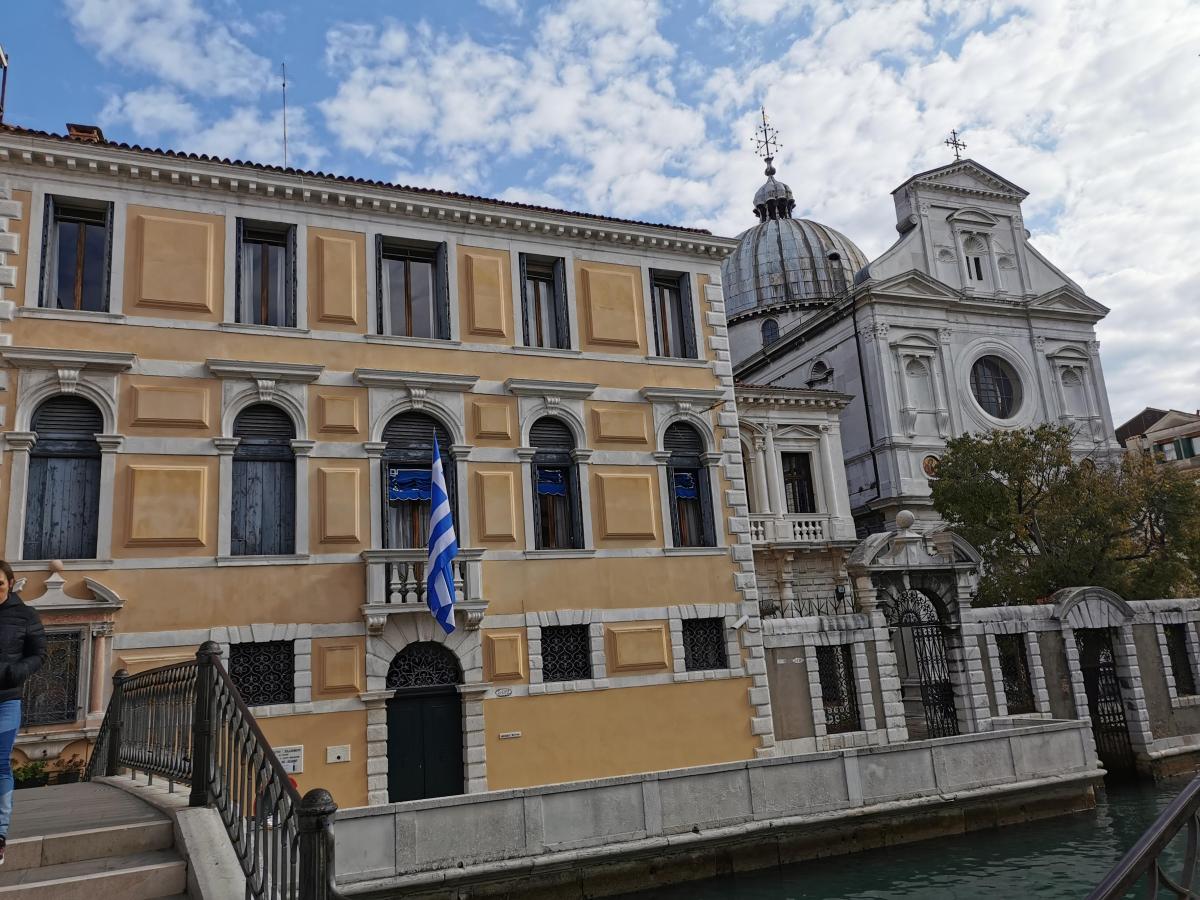
Istituto Ellenico
ph. Comune di Venezia
Stage 5: Campo and Church of San Zaccaria
Walking along Fondamenta dell’Osmarin you arrive to Campo San Zaccaria. The itinerary through the Castello distict comes to an end with a visit to the campo and church of San Zaccaria, a masterpiece by Mauro Coducci and Antonio Gambello, two great architects of the early Venetian Renaissance. Past the Gothic arch depicting the Virgin Mary Enthroned with the Child Jesus between St. Zaccaria and St. John the Baptist, which once was the entrance to the monastery, we are now at the entrance to Campo San Zaccaria. The facade of the 15th century church is imposing, monumental, dwarfing the facade of the original Gothic
church used by the nuns that stands next to it. The fine square tower dating from the 13th century is also part of the church of the Benedictine nuns. On the right you can see the barracks of the Carabinieri, today located in the recently restored cloisters of the convent. The facade in Renaissance style designed by Coducci is particularly noteworthy, but if we examine it carefully, we will discover that the lower levels by Gambello are still in Gothic style with the typical twisted motif that recalls the ropes of ships and that we find in all the buildings of that period. Looking upward, we can see the characteristic curvilinear tripartite crowning, the signature of all the facades designed by Mauro Coducci. Very suggestive is the interplay of light and shadow created by the protrusions and recesses of the small columns and the arches of the windows on the upper part, a stylistic feature that was to become a constant in Venetian architecture.
The interior of the church is absolutely worth the visit, not only to discover the pictorial masterpieces it contains, but also to understand the historical layers of the complex. We suggest starting from the 9th / 10th century elements present in the suggestive crypt originally dedicated to the remains of St. Zechariah, father of St. John the Baptist, and continue with the visit to the 15th century church now called Chapel of St. Tarasio with the frescoes by Andrea del Castagno dated 1442 and considered the first work of Renaissance painting in Venice. The chapel of San Tarasio, which corresponds to the apse of the 15th century church used by the nuns also contains three late Gothic polyptychs by Vivarini and by Giovanni d'Alemagna for the wooden sculpture parts. S. Zaccaria was unofficialy a state church, the destination of the Doge's formal visit every year on Easter Day to thank the nuns who had donated the orchard they owned for the expansion of Piazza San Marco to Doge in office at the time, Sebastiano Ziani, brother of one of the nuns...
Absolutely remarkable are the chapels arranged radially around the ambulatory behind the main altar, the only example in Venice and very rare in Italy, and the airy arches of the presbytery and nave, both by Gambello.
The famous altarpiece of San Zaccaria by Giovanni Bellini, dated 1505, decorates an altar in the left aisle and the 1 euro coin required to light the chapel and fully appreciate the nuances of light and shadow and colour that give a three-dimensional effect to the pictorial space painted as a continuation of the surrounding architecture is more than well spent.
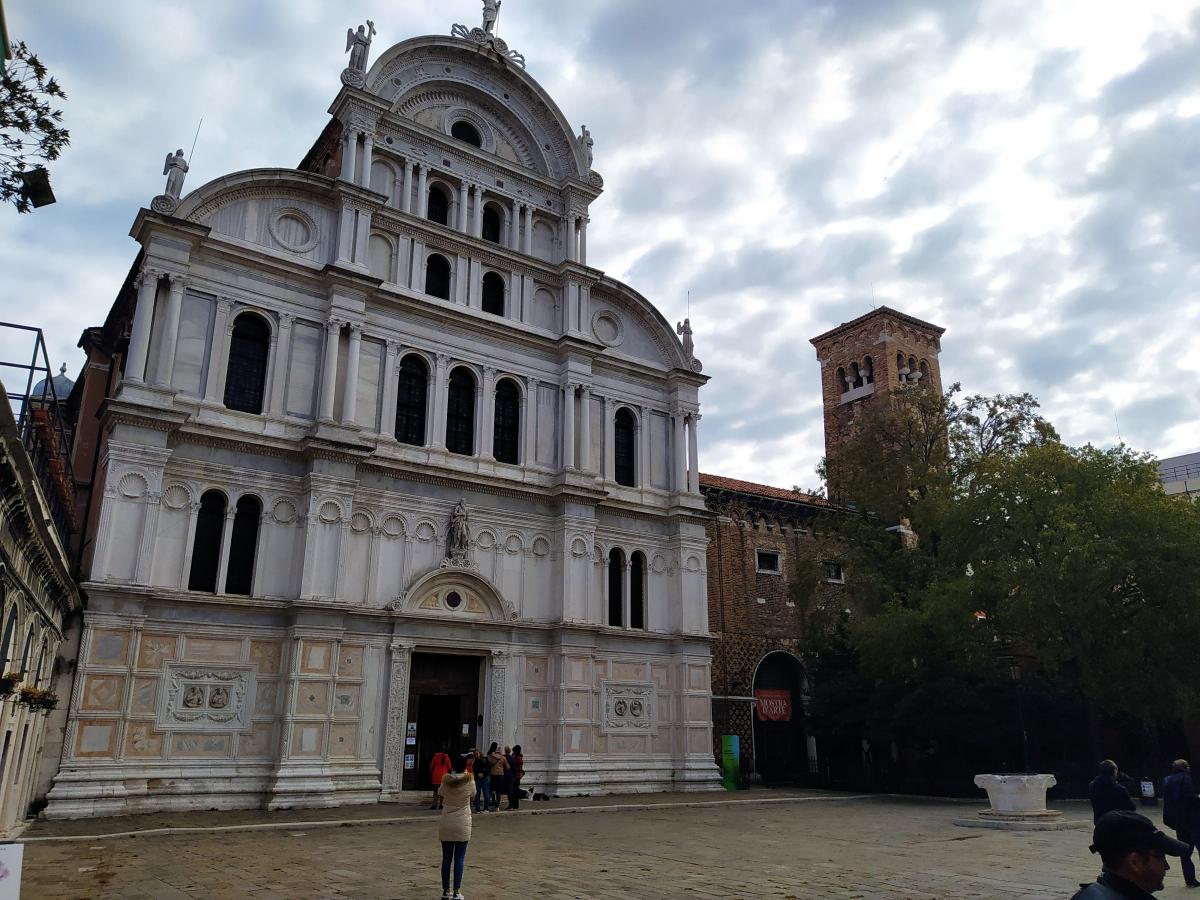
Church of San Zaccaria
ph. Comune di Venezia



